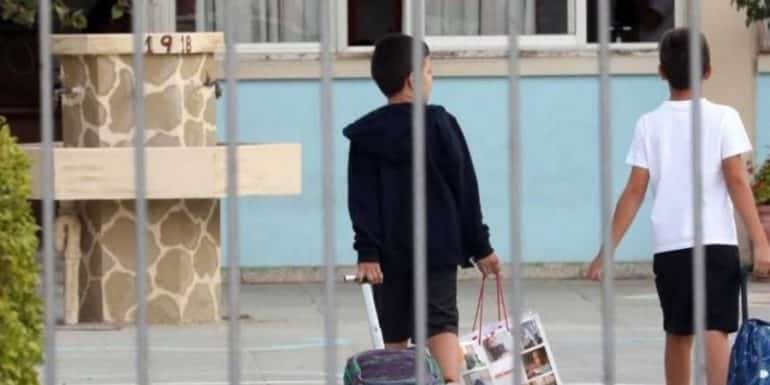The results of a survey on air quality in primary school classrooms were published by TEPAK, citing among the findings the fact that for most of most of the daily school time during the summer period, the temperature in the classrooms exceeded the recommended ceiling, while in one third of the measurements for suspended particles inside the classrooms, the value exceeded the recommended limit.
According to an announcement, this study is the first survey conducted on a representative sample of the school population of Cyprus (42 primary schools from all provinces), to assess indoor air quality in primary school classrooms, during the warm period of May-July.
Specifically, it is reported that the STEPS study was conducted in May-July 2021, a period during which a special health protocol was implemented COVID-19 for the operation of schools. Using questionnaires, the characteristics of the schools / classrooms were collected and using sensors, the levels of environmental parameters for 24 or 48 hours indoors and outdoors (two classes per school) in public primary schools in densely populated areas (degree of urbanization 1 and 2) in Cyprus.
The results showed that during the period of sample collection, the natural ventilation of the classrooms with open windows and doors during the lessons helped to maintain the ventilation index (CO2) at acceptable levels. "However," the statement said, "for most of the daily school time (85%), the air temperature inside the classrooms exceeded the recommended maximum (27 ° C)."
Regarding the presence of suspended particles in the air, it is noted that one third of the PM2.5 measurements inside the classrooms exceeded 15 μg / m3 (recommended value per 24 hours).
Presenting the characteristics of the schools 42 public primary schools of all the provinces of Cyprus and the classes that took part in the research, the research team states that there were fans in 90% of the classes and on average 45-63% of the total fans in class (1-2 fans) operated, usually, after the first break. It is noted that air conditioning was present in 11% of the classes and the average use of air conditioning during the school day was almost negligible (average number of air conditioners in operation: 0-0.1).
It is also reported that all classes (84) were cleaned daily, while bleach was used in 81% of schools. It is noted that out of the schools that used bleach, 77% of the schools used bleach on a daily basis. It is also reported that more than half of the classrooms (55%) had two doors and on average 86-91% of the classroom door / doors were open throughout the school day. Finally, it is reported that the average number of open windows in the classroom during the school day was 4 (56-59% of the total windows in the classroom).
The research team notes in its announcement that "further research is needed to better understand the dynamic interaction of environmental parameters in combination with health indicators or prevention of transmission of viruses and germs within the school environment, taking into account climate response policies and health protocols ".
The study was conducted by the Cyprus International Institute for Environmental and Public Health and the Department of Electrical and Computer Engineering and Informatics of TEPAK, in collaboration with Lelantus Innovations Ltd and Phoebe Research & Innovation Ltd.
The research team also notes that the objectives of the study were to describe the levels and fluctuations of a number of air quality parameters [air temperature, relative humidity (RH), particles (PM), carbon dioxide (CO2) and volatile organic compounds. (VOCs)] in public primary school classrooms located in densely populated areas of all the provinces of Cyprus, during the period May-July 2021. The aim was also to compare the levels of air quality parameters between indoor and outdoor schools, as well as levels of air quality parameters inside the classrooms with the levels recommended by reputable international organizations.
Source: KYPE
